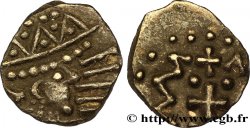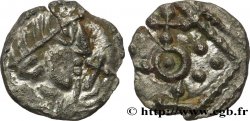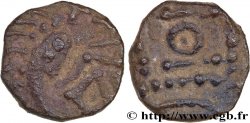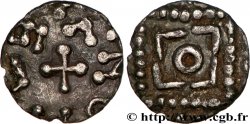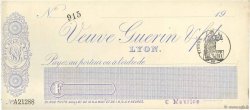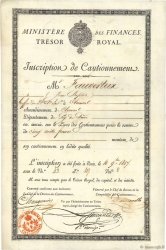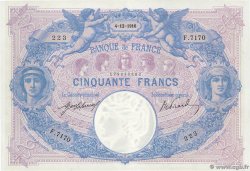v41_1666 - INGLATERRA - ANGLOSAJÓN Sceat aux têtes affrontées et aux 4 oiseaux, Série J, type 37
MONNAIES 41 (2009)
Precio de inicio : 280.00 €
Valoración : 500.00 €
lote sin vender
Precio de inicio : 280.00 €
Valoración : 500.00 €
lote sin vender
Tipo : Sceat aux têtes affrontées et aux 4 oiseaux, Série J, type 37
Fecha: c. 710-760
Metal: plata
Diámetro: 12,5 mm
Peso: 0,74 g.
Grado de rareza: R1
Comentarios sobre el estado de conservación:
Monnaie de qualité exceptionnelle pour ce type, avec un droit et un revers complets et de frappe vigoureuse, mais avec une patine hétérogène très peu photogénique. Sinon, tous les reliefs sont particulièrement bien venus et détaillés
N° en los catálogos de referencia :
Anverso
Titulatura del anverso: ANÉPIGRAPHE.
Descripción del anverso: Deux têtes face à face, une croix posée sur une base entre les deux ; grènetis.
Reverso
Titulatura del reverso: TRACES DE LÉGENDE.
Descripción del reverso: Petite croix bouletée entourée de quatre oiseaux (?) formant une sorte de swastika sinistrogyre ; grènetis.
Comentario
Cette monnaie est l’une des rares avec deux représentations humaines de l’époque mérovingienne. Ce type est communément trouvé en Gaule, isolé ou avec d’autres deniers mérovingiens, ce qui prouve une circulation large. D. M. Metcalf distingue deux groupes dans ces monnaies ; les monnaies officielles et les imitations. Les exemplaires de plus beau style sont traditionnellement considérés comme officiels et les autres comme imitations...
Ce type aurait été frappé dans toutes les régions du Sud et de l’Est de l’Angleterre, mais plus spécialement au sud-est et dans le bassin de la Tamise.
This coin is one of the few with two human representations from the Merovingian period. This type is commonly found in Gaul, either alone or with other Merovingian denarii, which proves a wide circulation. DM Metcalf distinguishes two groups in these coins: official coins and imitations. The finest examples are traditionally considered official and the others as imitations... This type would have been struck in all regions of the South and East of England, but especially in the South-East and in the Thames basin
Ce type aurait été frappé dans toutes les régions du Sud et de l’Est de l’Angleterre, mais plus spécialement au sud-est et dans le bassin de la Tamise.
This coin is one of the few with two human representations from the Merovingian period. This type is commonly found in Gaul, either alone or with other Merovingian denarii, which proves a wide circulation. DM Metcalf distinguishes two groups in these coins: official coins and imitations. The finest examples are traditionally considered official and the others as imitations... This type would have been struck in all regions of the South and East of England, but especially in the South-East and in the Thames basin







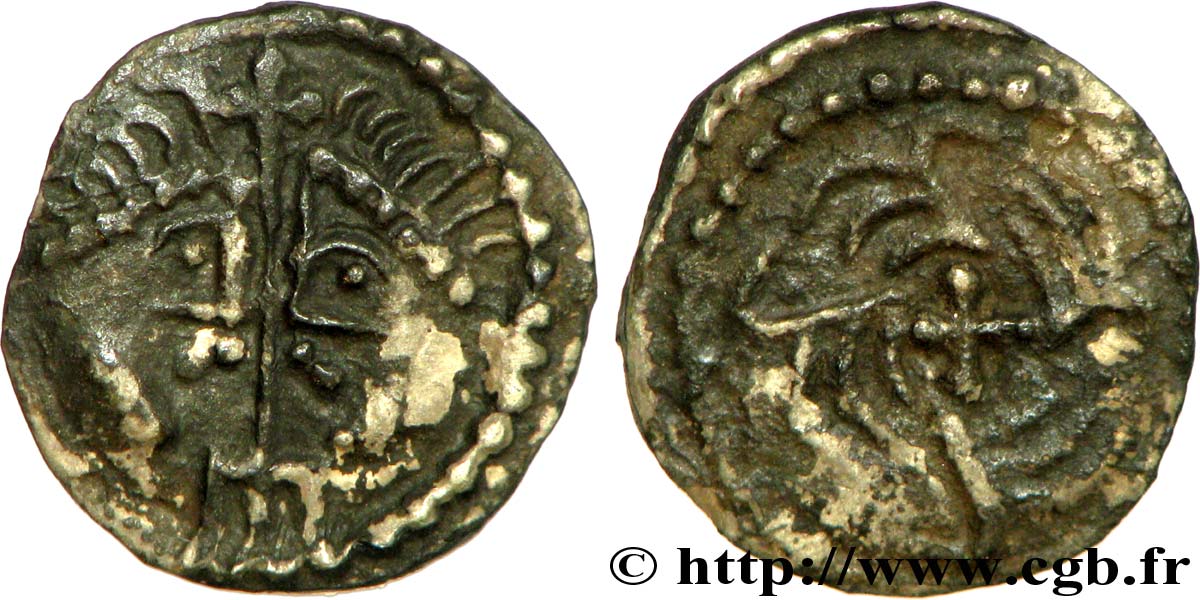
 Informar de un error
Informar de un error Imprimir la página
Imprimir la página Comparte mi selección
Comparte mi selección Haz una pregunta
Haz una pregunta Consignar / vender
Consignar / vender
 Descriptivo
Descriptivo